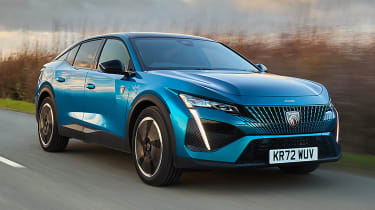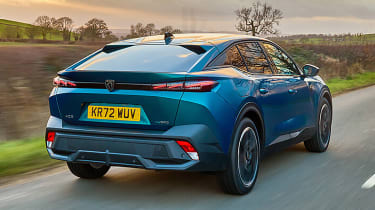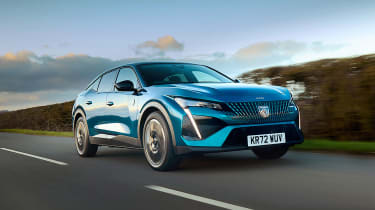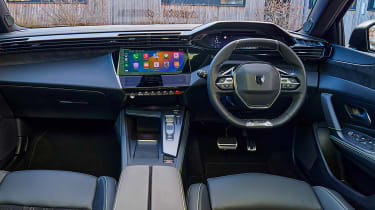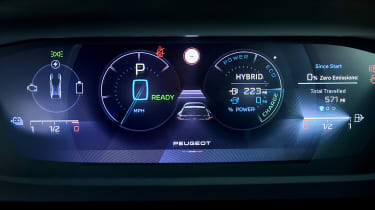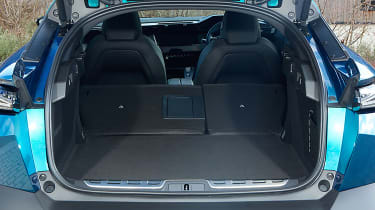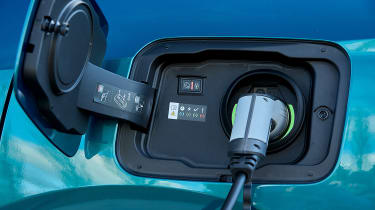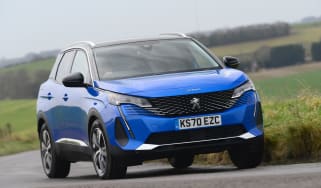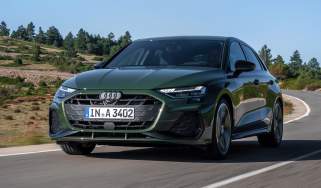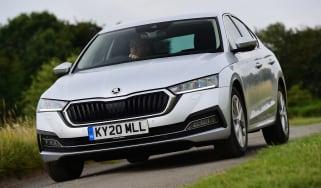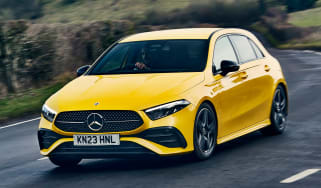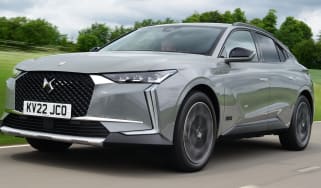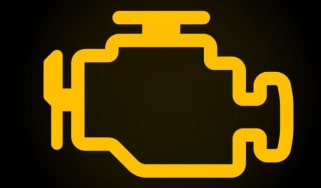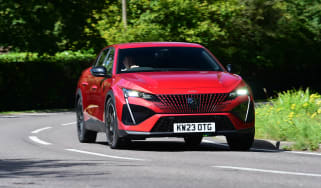Peugeot 408 review – sleek lines and practicality combined
“The Peugeot 408 blurs the lines between SUVs, hatchbacks and even saloons, combining style with practicality in the process”
Pros
- Efficient
- Striking looks
- Decent handling
Cons
- Sluggish powertrains
- Awkward seating position
- Top models are expensive
Verdict - Is the Peugeot 408 a good car?
The Peugeot 408 is an alternative to the Peugeot 3008 SUV but also the Peugeot 308 hatchback. It shares loads of parts with both of those models but comes in a body shape that’s more sporty-looking than both, but still with enough practicality for many families. The high-spec 225 plug-in hybrid model is expensive so we’d stick with the entry-level PHEV as it’s better value for money. The 408 only really makes sense if you love how it looks, though, as the 308 is cheaper and the 3008 is more practical.
Peugeot 408 models, specs and alternatives
The Peugeot 408 is a new model from the French brand that has everyone asking the same question: is it a hatchback, a saloon or an SUV? The answer is that it’s all of them and none of them, and that it slots between the 308 hatchback and 508 saloon in the brand’s lineup just as the model names suggest.
Peugeot itself calls the 408 a ‘C-segment fastback’. C-segment means it’s a similar size to models like the Volkswagen Golf and Ford Focus, while ‘fastback’ refers to the long, sloping rear roofline. The 408 has some direct rivals from France, including the Citroen C5 X (which it shares parts with) and the Renault Arkana, and pricing kicks off from around £32,000. That's quite good value, but prices can rocket to almost £45k for the top plug-in hybrid.
It uses the same underpinnings as the Peugeot 308 family hatchback and 3008 SUV, as well as the new Vauxhall Astra. There are petrol, mild hybrid and plug-in hybrid powertrains and an all-electric version called the e-408 will be available as well.
The interior of the 408 is just as stylish as the exterior and all the materials are of excellent quality. The design looks very modern and interesting, although the lack of air-con buttons is frustrating. The latest version of Peugeot’s i-Cockpit infotainment system is included, with two central touchscreens plus a 3D digital instrument cluster.
While far from a performance car, the Peugeot 408 handles just as well as its sibling, the 308, out on the road. The steering feels sharp – no doubt due to the car’s tiny steering wheel – and the suspension does well in soaking up bumps. The only drawback is that none of the powertrains on offer provide all that much power; a Cupra Leon or Formentor is a better bet if you’re after a fast and sporty family car.
Aside from choosing your car’s colour and powertrain – which can have a big impact on its price – the only other significant choice for buyers is picking one of the 408’s three distinct trim levels: Allure, Allure Premium and GT. Peugeot predicts the GT will be the biggest seller in the UK, but even the entry-level Allure comes with lots of standard kit including LED headlights, 17-inch alloy wheels, dual-zone climate control, a reversing camera and the aforementioned i-Cockpit infotainment system.
The regular 308 is already so stylish it begs the question why anyone would need to step up to its new bigger and more expensive brother. However, the 408 is quick to make a case for itself with its higher driving position and larger 536-litre boot. While the petrol model feels a bit underpowered, the 408’s plug-in hybrid powertrains are sure to appeal to private and company car drivers alike.
|
Trim levels |
Power options |
|
|
Peugeot 408 alternatives
Thanks to its somewhat unconventional design, the only direct rival to the 408 is the Citroen C5 X. Look a bit further, though, and there's a plethora of hatchbacks and SUVs in a similar price bracket.
Crossover SUVs
- Cupra Formentor
- Citroen C5 X
- Renault Arkana
- Toyota C-HR
Hybrid family cars
- Peugeot 308
- Volkswagen Golf
- Toyota Corolla
Electric SUVs
- Renault Megane E-Tech
- Volkswagen ID.4
- Citroen e-C4
MPG, running costs & CO2
Despite looking like a mix between a 4x4 and a family hatchback, the Peugeot 408 leans more towards the latter when it comes to running costs. Buyers have the choice of one of several different powertrains: one being a fuel-sipping petrol with or without mild hybrid tech, and the others a pair of company car tax-busting plug-in hybrids.
Thanks in part to its small size, the PureTech 1.2-litre petrol engine will return up to a frugal 48.1mpg on the combined WLTP test cycle. This is slightly less than the equivalent 308 with the same engine equipped, though it’s to be expected given the 408 is a slightly larger car. With CO2 emissions of up to 156g/km, this petrol 408 will be of little interest to company car drivers though, given its Benefit-in-Kind (BiK) tax rating of up to 36%.
For 2024 a mild-hybrid petrol also arrived, which is likely to become a top pick for private owners. It's based around the same 1.2-litre petrol engine, but a small electric motor and a new six-speed automatic gearbox boost its efficiency. Peugeot even claims that it can spend around half its time in zero-emissions mode around town, slashing its CO2 figure by up to 22g/km and boosting fuel-efficiency by up to 15%.
Business users should look at one of the two plug-in hybrids (PHEVs) on offer. Our pick would be the more affordable entry-level 180 model, and both PHEVs manage up to 40 miles of pure electric range, meaning they just slot into the low 8% BiK bracket. The Cupra Formentor eHybrid sits in the more expensive 12% BiK bracket. While this is good news for lowering tax bills, our test drive in cool conditions and on mostly open roads found the electric driving range to be just over half of the official figure. Warmer weather and town driving could see a significant improvement, but don’t expect 40 miles in real-world driving.
Regardless of which PHEV you choose, both will be able to return over 200mpg – provided you keep the battery charged up – and can charge at a rate of 3.7kW as standard – a faster 7.4kW on-board charger is available as an option.
|
Model |
Fuel economy |
CO2 Emissions |
|
1.2L PureTech 130 EAT8 |
41-48.1mpg |
133-156g/km |
|
1.2L HYBRID 136 e-DSC6 |
TBC |
114g/km |
|
HYBRID 180 e-EAT8 |
214.7-270.3mpg |
24-30g/km |
|
HYBRID 225 e-EAT8 |
211.3-269.5mpg |
24-30g/km |
Engines, drive & performance
The Peugeot 408 shares many of its parts with the Citroen C5 X and while that car has been set up primarily for comfort, Peugeot claims its offering has been tuned to appeal to “those who love driving”. So has it worked?
Yes and no. While the 408 is certainly good to drive, it doesn’t offer the same thrills as, say, a Cupra Formentor. Just like in the 308, the steering feels sharp and body roll is kept to a minimum. Even on PHEV models with heavy battery packs, the 408 never feels overly heavy, although it also doesn’t feel nimble enough to give the confidence to fully attack a twisty B-road.
Petrol models
This is no thanks in part to the relatively underpowered powertrains on offer. Nowhere will this lack of grunt be more apparent than in the entry-level petrol car. This model utilises a 1.2-litre PureTech three-cylinder engine that produces 128bhp. It accelerates smoothly, but vibrations can be felt in the cabin occasionally thanks to the offbeat nature of its three cylinders. The numbers don’t exactly do the petrol 408 a favour either; 0-62mph takes an unimpressive 10.4 seconds, meaning this variant will be best suited for driving around town and the suburbs. Perhaps the biggest frustration is that the combination of its eight-speed automatic gearbox and stop/start technology can lead to a jerky experience in town driving as the engine cuts in and out.
We haven't tried the mild hybrid version of this engine yet, so we'll report back when we find out if the addition of a 28bhp electric motor and new six-speed automatic gearbox has given the 408 an extra spring in its step when pulling away and accelerating through the gears.
Plug-in hybrid models
The plug-in hybrid models both utilise 1.6-litre four-cylinder petrol engines, paired with a 109bhp electric motor to produce 178bhp and 222bhp respectively. The 178bhp PHEV ‘180’ gets from 0-62mph in 8.1 seconds; while the 222bhp ‘225’ looks as though it should be quite a bit faster on paper, in reality, it's only 0.3 seconds quicker to 62mph than its lesser sibling.
During our drive of the more potent PHEV on UK roads, it provided smooth and adequate performance, giving the 408 a relaxed demeanour. It’s especially quiet in its electric mode of course, but aside from a slight jolt as it kicks in, the petrol engine is also relatively quiet.
All 408 models – petrol and hybrid – come with the aforementioned eight-speed automatic gearbox which, unfortunately, can be slow to respond at times. The suspension does a good job of smothering most bumps, but we found the extra weight of the plug-in hybrid powertrain can cause the car to bounce slightly around town, most commonly when tackling speed bumps. The lighter weight of the 1.2-litre petrol engine helps it glide over bumps with less fuss.
|
Model |
Power |
0-62mph |
Top speed |
|
1.2L PureTech 130 EAT8 |
128bhp |
10.4s |
130mph |
|
HYBRID 180 e-EAT8 |
178bhp |
8.1s |
140mph |
|
HYBRID 225 e-EAT8 |
222bhp |
7.8s |
145mph |
Interior & comfort
Peugeot has been making some of the best-looking mainstream cars of the last few years and this also goes for the brand’s interiors. The 408’s cabin doesn’t only look stylish, it’s plush and comfortable, too. There are plenty of soft-touch plastics around and the car’s supple suspension means covering long distances should be a breeze.
Like all modern Peugeot cars, the 408 gets the marque’s unique i-Cockpit infotainment setup, sharing much of its technology with the 308. The centre screen – measuring 10 inches in diameter – is quick to respond to your inputs and is supplemented by a smaller touchscreen mounted below, which acts as a set of shortcut buttons. One annoyance is that instead of physical knobs or switches, Peugeot has integrated the climate controls into the screens, meaning they can be fiddly to operate when on the move. On a more positive note, all cars come with sat-nav, as well as Apple CarPlay and Android Auto.
However, it’s the digital instrument cluster and seating position that will prove to be the most controversial. Peugeot’s i-Cockpit has been designed to position the steering wheel below the dials, rather than having you look through the gap in the spokes. This means that you’ll be sitting with the steering wheel much lower than you normally would so as not to conceal the readouts, and taller drivers may find this uncomfortable. Thankfully, the 3D effect on the instruments themselves is somewhat of a consolation.
There are three main trim levels to choose from – Allure, Allure Premium and GT. Entry-level Allure cars come with plenty of standard kit including LED headlights, 17-inch alloy wheels, part-leatherette upholstery, sat-nav, dual-zone climate control, automatic high beams and a reversing camera.
Stepping up to the Allure Premium costs roughly £1,000 and this includes larger 19-inch diamond-cut alloys, gloss black exterior detailing, keyless entry and a host of extra safety equipment. Finally, the range-topping GT boasts Matrix LED headlights, full-LED taillights, leather and Alcanatra upholstery, a heated leather steering wheel and a powered bootlid.
|
Key features | ||
|
Allure
|
Allure Premium (Allure plus…)
|
GT (Allure Premium plus…)
|
Practicality & boot space
The Peugeot 408 is around 300mm longer than the 308 hatchback, with a 107mm longer wheelbase (the gap between the front and rear wheels) and this comes as a great benefit to passenger and boot space. In fact, Peugeot says the 408 has the best rear knee room of any car it currently sells, and it’s close to the Skoda Octavia in this department. Unlike the 308 which has a cramped set of rear seats, the 408’s extra space means taller rear passengers can stretch out more – it has excellent knee room in particular. However, the 408’s sloping roofline may come as an annoyance instead – though not as much as we’d expected from such a vehicle.
|
Size comparison | |||
|
Model |
Length |
Width |
Height |
|
Peugeot 408 |
4,687mm |
1,859mm |
1,478mm |
|
Peugeot 308 |
4,365mm |
1,850mm |
1,465mm |
|
Cupra Formentor |
4,450mm |
1,839mm |
1,528mm |
|
Renault Arkana |
4,568mm |
1,821mm |
1,571mm |
Boot space
The biggest impact of this increase in size is definitely found in the boot; petrol 408s offer 536 litres of cargo space in the rear, which shrinks to a still-impressive 471 litres in plug-in hybrid models, with enough room left under the floor for a charging cable. That’s 175 litres more than the 308 and roughly the same as in a Renault Arkana, plus you can fold the rear seats down to increase the load area to a larger 1,611 (1,545 in the hybrid) litres.
|
Boot space comparison | |
|
Model |
Boot space |
|
Peugeot 408 |
536 litres |
|
Peugeot 308 |
412 litres |
|
Cupra Formentor |
450 litres |
|
Renault Arkana |
480 litres |
Reliability & safety
Given the 408 only debuted in late 2022, it’s too new to have featured in our Driver Power customer satisfaction survey. However, Peugeot as a brand placed an impressive ninth out of 29 manufacturers, with around 19% of owners reporting an issue within the first year of ownership. This puts it well ahead of mainstream rivals like Nissan (19th), Volkswagen (27th) and Ford (28th).
The 408 underwent safety testing by Euro NCAP in late 2022, and like its smaller sibling, the 308, could only muster a four-star rating out of five. Given they share most of their parts, this is no surprise – it’s important to remember that this doesn’t mean either of these cars are unsafe, it’s just an example of how stringent Euro NCAP’s tests are becoming.
All 408 models benefit from autonomous emergency braking, adaptive high beams and traffic sign recognition. Higher-spec cars get more safety kit which includes blind-spot monitoring, adaptive cruise control and lane-keep assist.
